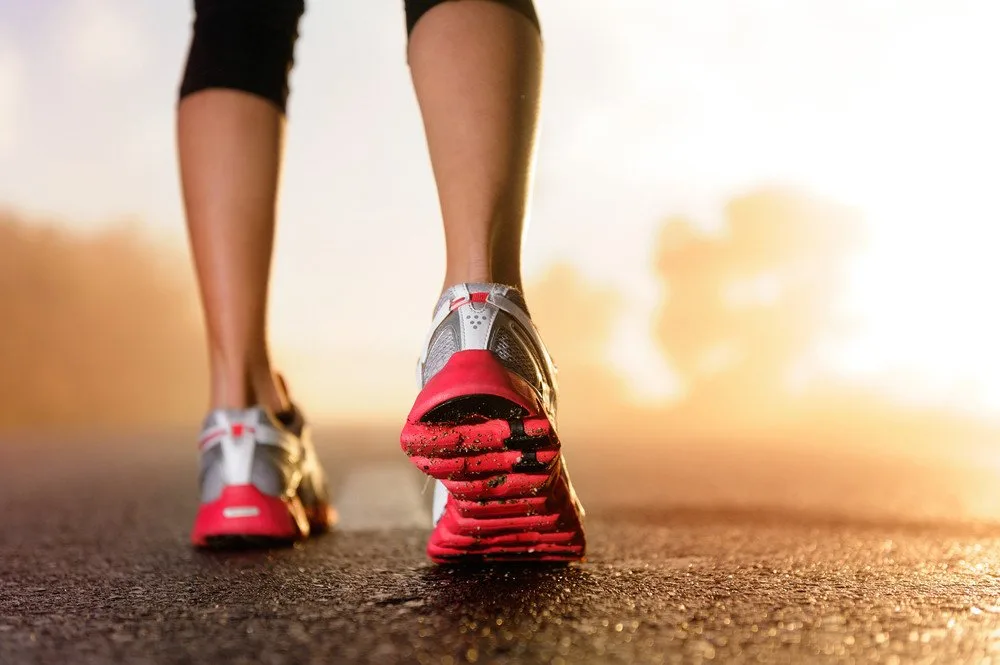Everyone loves a good workout because leading an active lifestyle comes with a number of health benefits. Additionally, we also love those workouts that allow us to blow off some steam, as well as burn the most calories.
Now if you’re looking to exercise to burn off some calories and fat, it’s important not to overdo it. Whilst becoming healthier and exercising more is something that we should all try to do, it’s important not to overdo it. The World Health Organization recommends that one does at least 150 minutes of moderate-intensity aerobic physical activity throughout the week or does at least 75 minutes of vigorous-intensity aerobic physical activity throughout the week (1). They also state that one can do an equivalent combination of moderate- and vigorous-intensity activity. That said, it’s important not to exceed these numbers, and you may end up jeopardizing your health.
The science behind burning calories
According to the American College of Sports Medicine (ACSM), the amount of calories one burn comes down to the metabolic equivalent. This is essentially the amount of energy that physical activity needs to complete. The more intense the activity is, the more oxygen the body needs to complete it which then means a high-calorie burn. What’s more, the more intense an activity, the more calories one will burn once that activity concludes (1).
Additionally, contributing factors that affect the actual number of calories burned include body weight, body fat percentage, age, level of fitness, as well as genetics. As these factors vary from person to person, it can also be impossible to determine exactly which workout will help to burn the most calories in a person. That said, the below-mentioned workouts will definitely give you a high-calorie burn.
The best workouts for calorie burn 
1. HIIT
If you’re on a time constraint, but you’re also looking to burn some calories, then HIIT exercises are definitely the way to go.
HIIT (high-intensity interval training) involves quick, intense bursts of exercise that require you to give your all, followed by short recovery periods. For instance, the workout may go on for 30 seconds, and you may only have one minute to rest. A study published in the journal Physiological Reports found that HIIT exercises helped to effectively burn calories both during and after exercise.
Additionally, HIIT workouts have also been found to reduce the risk of diabetes by reducing blood sugar levels and as well as protect your heart health by reducing blood pressure (2, 3).
2. Jumping rope
Jumping rope is another effective way to burn calories (no wonder boxers are so fond of it!). In fact, just a few minutes of jump rope can help to burn calories as the exercise focuses on the whole body – from your arms to your legs.
![workouts [longevity live]](https://longevitylive.com/wp-content/uploads/2018/07/jumpropechoice-1-620x634.jpg) What’s more, jumping rope has also been found to have cognitive benefits. According to the findings published in the Journal of Sports Science & Medicine, jumping rope can help to not only improve coordination, but it can also boost your thinking skills.
What’s more, jumping rope has also been found to have cognitive benefits. According to the findings published in the Journal of Sports Science & Medicine, jumping rope can help to not only improve coordination, but it can also boost your thinking skills.
3. Rollerblading
Rollerblading is a fun and effective way to burn calories. Additionally, unlike a lot of other intense exercises, it does not place a lot of strain on the joints. This then makes it the perfect low-impact exercise for anyone looking to protect their joints. Moreover, one can also add short sprint bursts for an even higher calorie burn.
Aside from the calorie burn, rollerblading also helps to improve your balance, coordination, and ability.
4. Running
If there’s one easy, effective way to burn calories that we can all do, it’s definitely running. What’s more, if you don’t have enough time to go for a long morning run, then you can simply opt for high-intensity sprints – which will also help to boost your calorie burn as the faster you run, the more calories you’ll burn.
Additionally, various studies have linked running to a number of health benefits. These include alleviating symptoms of depression, reducing the risk of age-related mental decline, and even improving your sleep quality.
5. Swimming
Another low-impact workout, swimming is a great way to both cool off and burn some calories. Now whether you’re doing a 30-minute casual lap around the pool, or butterfly strokes, getting into the water will help you burn off about the same number of calories as 30 minutes of jogging.
If you need more reason to jump in, swimming has been linked to helping to relieve stress, halving the risk of death, and helping to lower blood sugar.
6. Walking
To think that something, so simple could help to burn calories. Now, whether you prefer a slow pace or quick briskness, walking is one of the easiest ways to effectively burn calories. Whether you walk around the office, opt for the stairs each time or even walk around the house as you clean it, you’ll definitely burn calories in each scenario.

If that’s not enough, getting your steps in can also help boost your overall health. In fact, various studies have found that walking can help improve your heart health, boost your immunity, alleviate joint pain and even increase your life span.
The best thing about these workouts is that they will not only help burn calories but also boost your health. As mentioned, it’s important not to get too carried away with these workouts and the number of calories that you are trying to burn as your health should always be a priority.
References
https://www.who.int/dietphysicalactivity/factsheet_adults/en/
https://www.unm.edu/~lkravitz/Article%20folder/epocarticle.html
https://www.health.harvard.edu/diet-and-weight-loss/calories-burned-in-30-minutes-of-leisure-and-routine-activities
Chase, Na, Sui, X & Blair, S. (2008). Swimming and All-Cause Mortality Risk Compared With Running, Walking, and Sedentary Habits in Men. International Journal of Aquatic Research and Education. 2. 213-223. https://DOI:10.25035/ijare.02.03.03
Ciolac, E, Bocchi, E, Bortolotto, L, et al. (2010). Effects of high-intensity aerobic interval training vs. moderate exercise on hemodynamic, metabolic and neuro-humoral abnormalities of young normotensive women at high familial risk for hypertension. Hypertension research : official journal of the Japanese Society of Hypertension. 33. 836-43. https://DOI:10.1038/hr.2010.72.
Fernandes, F & Matthys, D & Hryhorczuk, C, et al (2015). Leptin Suppresses the Rewarding Effects of Running via STAT3 Signaling in Dopamine Neurons. Cell metabolism. 22. 10.1016/j.cmet.2015.08.003.
Guiney, H. & Machado, L. (2013), Benefits of regular aerobic exercise for executive functioning in healthy populations, Psychonomic Bulletin & Review 20: 73. https://doi.org/10.3758/s13423-012-0345-4
Jelleyman, C, Yates, T, O’Donavan, G et al. (2015). The effects of high-intensity interval training on glucose regulation and insulin resistance: A meta-analysis. Obesity Reviews. https://DOI:10.1111/obr.12317.
Loprinzi, P & Cardinal, B. (2011). Association between objectively-measured physical activity and sleep, NHANES 2005–2006. Mental Health and Physical Activity. 4. 65-69. https://DOI:10.1016/j.mhpa.2011.08.001.
Sevits, K, Melanson, E & Swibas, T et al. (2013). Total daily energy expenditure is increased following a single bout of sprint interval training. Physiological reports. 1. e00131. https://DOI:10.1002/phy2.131
Trecroci, A., Cavaggioni, L., Caccia, R., & Alberti, G. (2015). Jump Rope Training: Balance and Motor Coordination in Preadolescent Soccer Players. Journal of sports science & medicine, 14(4), 792–798. https://www.ncbi.nlm.nih.gov/pmc/articles/PMC4657422/



![women [longevity live]](https://longevitylive.com/wp-content/uploads/2020/01/photo-of-women-walking-down-the-street-1116984-100x100.jpg)










